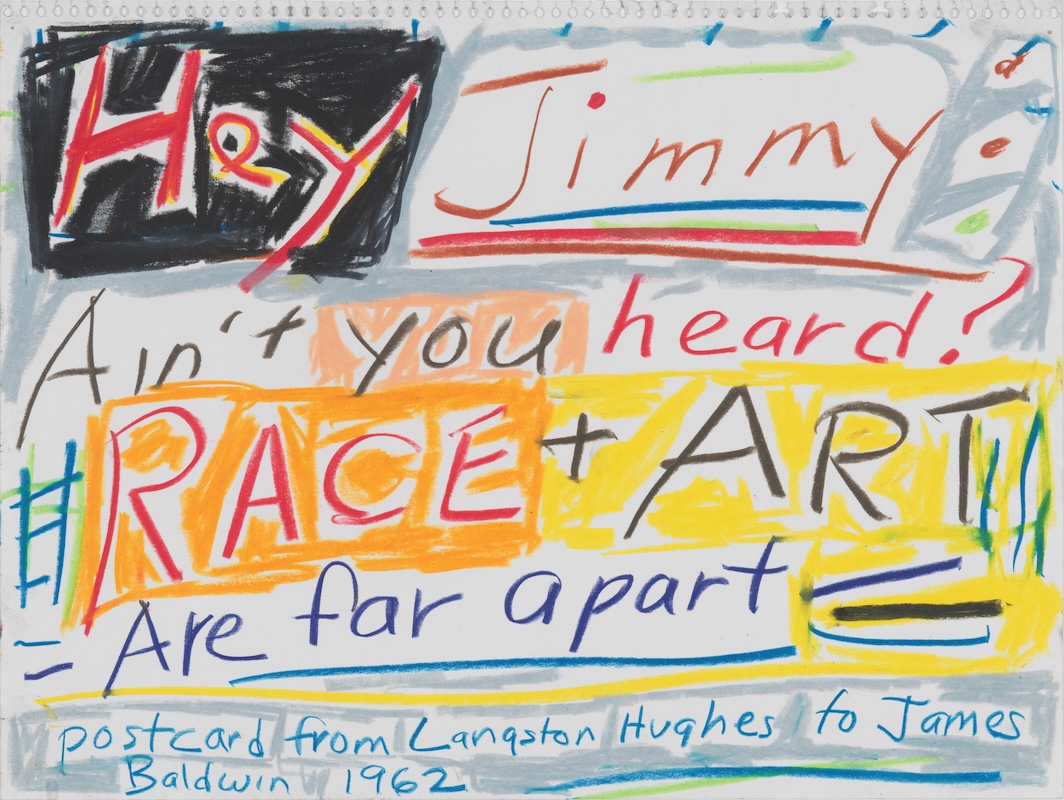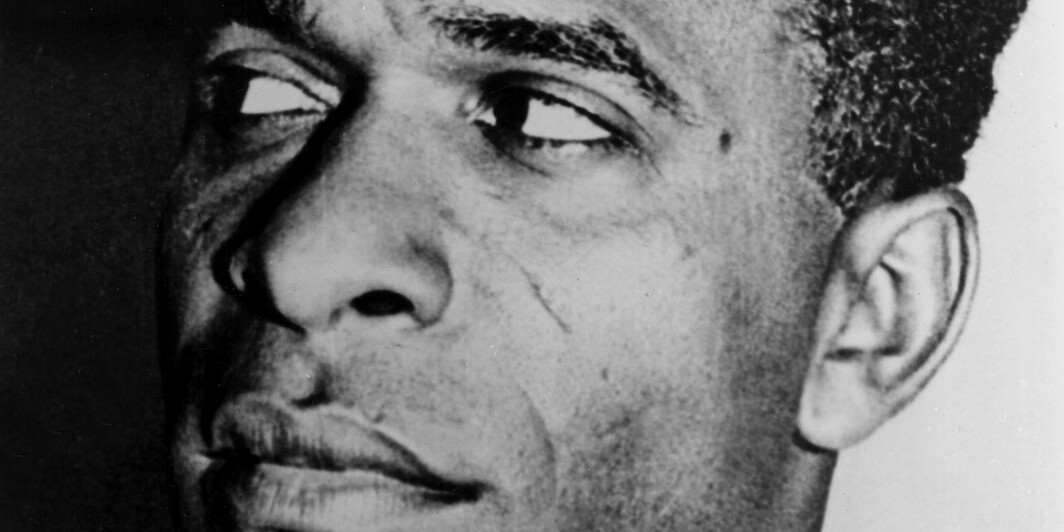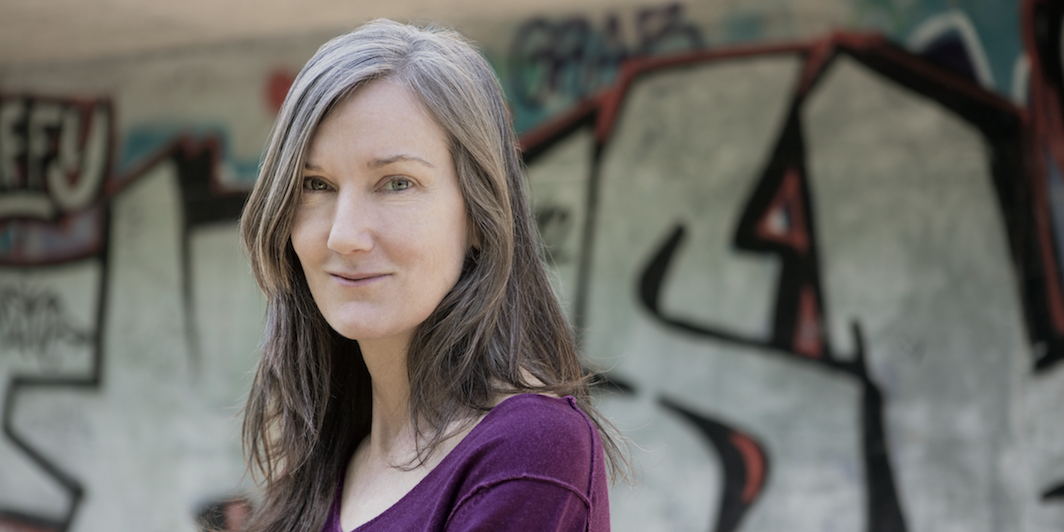Brandon Taylor’s Minor Black Figures (Riverhead, $29)—his fourth book of fiction—is an ambitious departure from his previous work. The novel takes up timely and fraught questions of representation within a culture industry hostile to idiosyncratic depictions of Black life that do not adhere to predictable narratives. At turns satirical and humane, the novel follows the romantic […]
- print • Fall 2025
- interviews • August 19, 2025
Praise be to Ariana Reines, of whom I’ve wanted to sing in praise since 2011, when I first heard her read the poem “Truth or Consequences.” That poem became an anthem and an aspiration among our friends and fellow poets for years after it was published in her third full-length book of poems, Mercury, and we […]
- print • Spring 2025
WHEN SARAH SCHULMAN WALKED INTO MY APARTMENT, a month or so after Artforum magazine fired me in October 2023 for publishing an open letter in support of Palestinian liberation, her first words were, “How can I help?” I think this is the most ethical sentence in the English language. She said it like she meant […]
- print • Winter 2024
Adam Shatz and I met recently to speak about his latest book, The Rebel’s Clinic: The Revolutionary Lives of Frantz Fanon (Farrar, Straus and Giroux, $32). Fanon was a psychiatrist and anti-colonial theorist. Born in Martinique in 1925, he trained as a psychiatrist in France before he became the director of a psychiatric hospital in Blida, Algeria. There, he began to work with the National Liberation Front (FLN) and later went into exile in Tunisia. Fanon died at the age of thirty-six in Bethesda, Maryland, after receiving delayed treatment for leukemia at the National Institutes of Health—arranged for by the CIA.
- print • Fall 2023
NIKKI SHANER-BRADFORD: Your new book Art Monsters: Unruly Bodies in Feminist Art (Farrar, Straus and Giroux, $35) riffs on a term many people first heard in Jenny Offill’s 2014 novel, Dept. of Speculation. Offill’s narrator says, “My plan was to never get married. I was going to be an art monster instead. Women almost never become art monsters because art monsters only concern themselves with art, never with mundane things.” What did you think of Offill’s term, and what does it mean in your book?
- • December 1, 2022
Emma Grove Emma Grove opens her graphic memoir, The Third Person, with a therapy session already underway. We don’t know anything about the therapist’s intentions or the patient’s reliability or even her hold on reality, but something definitely seems off. The rest of the doorstopper memoir about Grove’s life as a trans woman with dissociative identity disorder (complete with “alters,” or distinct personalities) unfolds similarly—as a transfixing psychological puzzle. Grove’s candor adds to the intrigue. She states up front that she doesn’t embellish her recollections: “As much of this as possible has been retained to give an entirely accurate
- • Dec/Jan/Feb 2023
ANGELO HERNANDEZ-SIAS: A funny story about the title story of Liberation Day (Random House, $28) is that you woke up one night from a dream and wrote something on your notepad, thinking it was the most brilliant idea. And when you woke up, you found it said: “Custer in the Bardo.”
- • October 20, 2022
For low-vision viewers, bright colors, which reflect light, are easiest to see. The cover of Beatrice Adler-Bolton and Artie Vierkant’s new book Health Communism is thus bright blue––what Adler-Bolton calls “true blue,” and what the Pantone color guide calls #2736 C. The coauthors’ names aren’t on the cover. Instead, they’re listed inside, on one of the opening pages. Adler-Bolton and Vierkant are perhaps best known as two of the hosts of Death Panel, a health justice podcast which takes its name from Sarah Palin’s 2009 claim that federal universal health-care would lead to state-sanctioned austerity and murder (which, as
- • October 4, 2022
David Smith with Hudson River Landscape, 1951, photographed outside his workshop at Bolton Landing, New York, c. 1951. Photo: The Estate of David Smith, New York. © 2022 The Estate of David Smith / Licensed by VAGA at Artists Rights Society (ARS), NY. Michael Brenson’s David Smith: The Art and Life of a Transformational Sculptor, the first biography of the celebrated twentieth century artist, was published by Farrar, Straus and Giroux this week. Brenson contributed the lead essay to David Smith Sculpture: A Catalogue Raisonné, 1932–1965, published last year by The Estate of David Smith and Yale University Press.
- • September 22, 2022
Rachel Aviv. Photo © Rose Lichter-Marck When she was six, Rachel Aviv was hospitalized for not eating. Doctors concluded that she had anorexia, but now, decades later, in her new book, Strangers to Ourselves: Unsettled Minds and the Stories That Make Us, Aviv is questioning that diagnosis—and many others. Her debut book concerns itself with people who occupy the “psychic hinterlands, the outer edges of human experience, where language tends to fail.” Strangers to Ourselves is that rare work that both elevates and remakes the form of writing about medical ethics. Each chapter is informed by Aviv’s meticulous reporting
- interviews • September 8, 2022
James Greer, Vanessa Salomon. Photo: Thomas Early “It feels like we’re living in hell,” James Greer tells me. A heavy sentiment, to be sure, especially when dropped into an otherwise sunny afternoon, on the back patio of a combination coffee shop/surf shop in New York’s Lower East Side. But Greer has spent a lot of time lately delving into climate-change research—for a film project—so the doomsday vibe is understandable. And despite the looming environmental apocalypse, he’s still got faith in the power of words to inspire and provoke. Everyone’s a multi-hyphenate these days, but Greer actually earns the distinction:
- print • Sep/Oct/Nov 2022
What does it do to us to lose someone? What does it do to a family? Can we separate our private devastation from the broader world that created the conditions under which we suffer loss?
- interviews • August 10, 2022
So far this year, seven people have died while in custody at New York’s Rikers Island jail complex. During ever more regular heat waves, reports spread of incarcerated people gasping for breath under door cracks and sharing one jug of water between twelve men. Violence, guard brutality, prisoner self-harm, and scant medical care are standard. Rikers, in short, is a humanitarian crisis. Five years ago, an official closure plan aiming to shutter Rikers by 2027 was introduced. While abolitionists have rightly called for No New Jails to replace the moribund institution, the plan involves its replacement with four borough-based
- interviews • June 22, 2022
On June 2, 1892, in the ostensibly progressive railroad town of Port Jervis, New York, a white mob lynched Robert Lewis, a Black teamster who was accused of assaulting a white woman. The murder of Lewis is the subject of historian Philip Dray’s absorbing new book, A Lynching at Port Jervis: Race and Reckoning in the Gilded Age. A jury soon acquitted all of the accused, forcing the local coroner to render the murder committed by “persons unknown,” the “ubiquitous last word of coroner’s findings throughout the South, now invoked here in Port Jervis,” as Dray writes. That coroner’s
- interviews • June 16, 2022
Kai Bosworth. Photo: Annabelle Marcovici. In his new book, Pipeline Populism: Grassroots Environmentalism in the Twenty-First Century, scholar Kai Bosworth investigates the rise of environmental populism alongside the Indigenous-led protests of the Keystone XL and Dakota Access pipelines. In showing how anti-pipeline struggles grew to include broader coalitions of protesters, Bosworth digs into the motivations of the rural white settlers involved in these struggles, discussing different notions of property, the desire for autonomy, and ties to place and community. But he warns that mass participation itself should not eclipse decolonization and defunct pipelines as political aims. Instead, Bosworth argues
- interviews • June 8, 2022
Lars Horn. Photo: Richard Allen As a writer who is the daughter of a fisheries biologist, I have found a dearth of books that make “the sciences” sensorial, not simply factual. I have longed for essays that feel like swimming, where language is aquatic, texts saturated with the sonics of being underwater. When I read Lars Horn’s Voice of the Fish, I found it did just that by submerging the reader in the mythological layers of the marine. Horn begins by describing the Book-Fish, a manuscript that was found dissolving within the belly of a cod at a market
- interviews • June 2, 2022
Nell Zink. Photo: Francesca Torricelli Nell Zink lives in Brandenburg, Germany, but writes mostly about Americans and their countercultures and excesses. Her novels tend to be funny, immensely contemporary, and a little chaotic—in their careening prose style as well as in their joyfully unwieldy premises. She’s written about a group of anarchist squatters navigating real estate and movement strategy in Jersey City (Nicotine); a white lesbian who, having gone on the lam, successfully passes as Black in the woods of Tidewater, Virginia, where Zink grew up (Mislaid); and, most recently, a Lower East Side post-punk couple whose daughter stumps
- print • June/July/Aug 2022
ASAD RAZA: Your new book, The Last Days of Roger Federer (Farrar, Straus and Giroux, $28), is in part a meditation on the tennis great and his retirement. It’s also about the late careers of other athletes, writers, artists, and musicians—Bob Dylan, Eve Babitz, Beethoven, to name a few. In this sense, you are writing about time, and this is reflected in the book’s unique formal structure. Can you tell me how that came about?
- interviews • May 26, 2022
Bernardine Evaristo. Photo: Jennie Scott Novelist Bernardine Evaristo is the consummate traveler, having led a peripatetic life since her teens. This adventurousness extends to her creative work, much of which starts off in one genre, only to end up in another. The Emperor’s Babe, which tells of the life and times of Zuleika, a young Sudanese woman who is “a nobody wanting to be somebody,” was conceived as a series of poems, but was eventually published as a verse novel incorporating unrhymed couplets. Blonde Roots has roots in a short story commissioned by The Guardian. Girl, Woman, Other, a
- interviews • May 13, 2022
“Often it seems that the more action there is, the less happens,” wrote Ursula K. Le Guin, explaining her frequent boredom with adventure stories. Kim Stanley Robinson is, among many things, a great spinner of adventures—but whether he’s depicting Earth’s colonization of Mars or geopolitical intrigues in Antarctica, the fast pace of events in his novels never crowds out their rich inner worlds. These inner depths are usually set against and within the drama of landscapes both seductive and deserving of respect. So it’s no surprise that The High Sierra: A Love Story, his first nonfiction book aside from



















